Whether you’re an educator, a homeschooling parent, or simply want some fun activities for the family at home STEM activities for larger groups can create fun and enjoyable experiences that combine the power of science and cooperation.
STEM activities in large groups can create powerful learning experiences. Whether it is a demonstration that engages with children’s minds or a team-building exercise that brings them together, STEM group activities will ensure that they co-operatively engage with the learning material.
Below are some of our favorite STEM activities for large groups. Let’s explore!
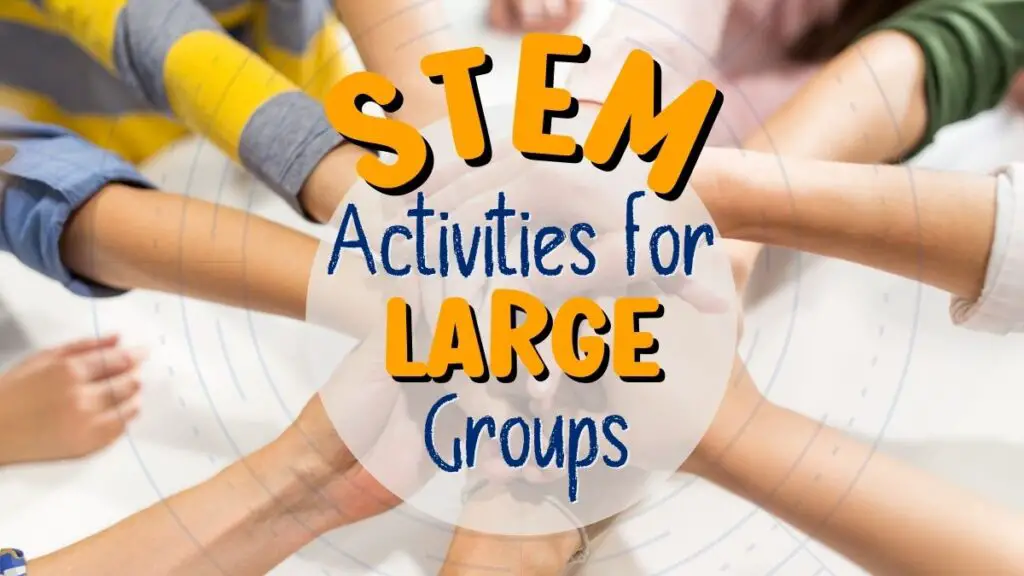
Great STEM Activities You Can Do In Groups
For large groups, you can plan demonstration activities that can be seen clearly from a variety of angles or hands on activities that everyone can participate in.
These simple STEM activities can be fun for classroom, summer camp, or a family to get all the participants engaged and working together.
I suggest breaking into smaller groups for some of these activities to allow everyone to work together. Just be sure that the exercise fits the age of the participants. As an extra incentive, small rewards or recognition can help groups work together well.
Making Elephant Toothpaste
It’s big, bold and fun to watch. Despite what the name may imply, this exercise does not have anything to do with elephants or toothpaste but instead offers a fun science experiment that may look like the title.
This is a great demonstration; given the size of the reaction it’s easy to see. This one can be messy, so make sure you prep your area and have some towels on hand to clean up.
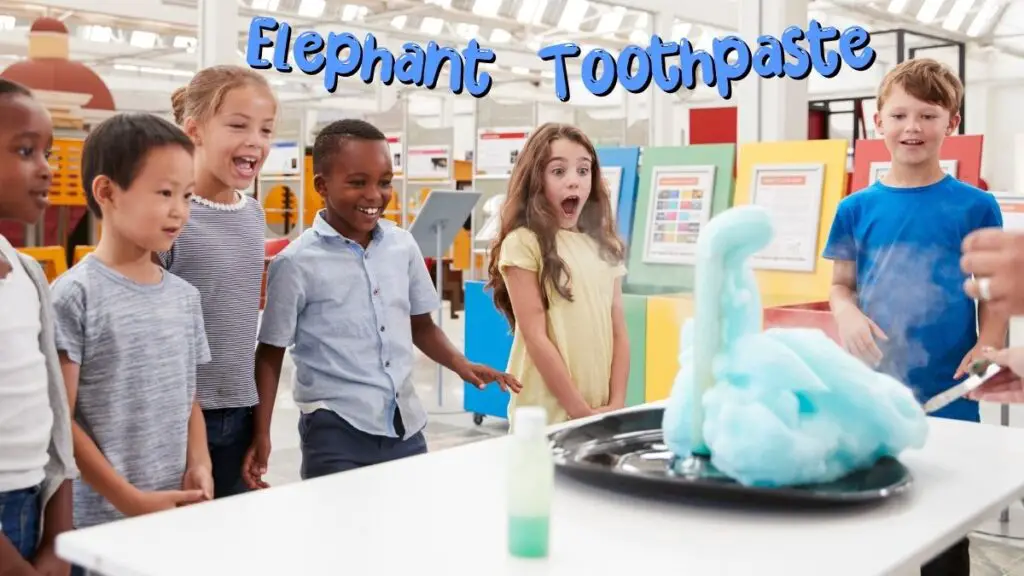
What You’ll Need (per group):
- Empty plastic bottles
- Dry yeast (1 Tablespoon)
- Warm water (3 Tablespoons)
- Liquid dish soap
- hydrogen peroxide (1/2 cup)
- Food coloring (optional)
How To Do The Experiment:
- Fill an empty bottle with half a cup of hydrogen peroxide.
- Add some dish soap and gently mix.
- Add different food colors by letting them run down the inside of the bottle so it doesn’t mix.
- Mix one tablespoon of dry yeast with three tablespoons of hot water and stir for half a minute.
- Anchor the bottle in place, quickly add the yeast and water mixture and retreat soon.
- Watch the reaction and experiment with more or less dish soap.
Even though this experiment is simple, this can be very interesting to do and watch for various ages. Best not to eat or brush with any of the “toothpaste” after the reaction. Be sure to wear safety goggles when adding the yeast mixture.
Make A Bottle Rocket
Bottle rockets are a fun and exciting way to experiment and show how certain ingredients react when mixed. Here we’ll use vinegar and baking soda as “rocket fuel” to propel our rocket into the sky. (Yes, launching a rocket is definitely and outdoor project.)
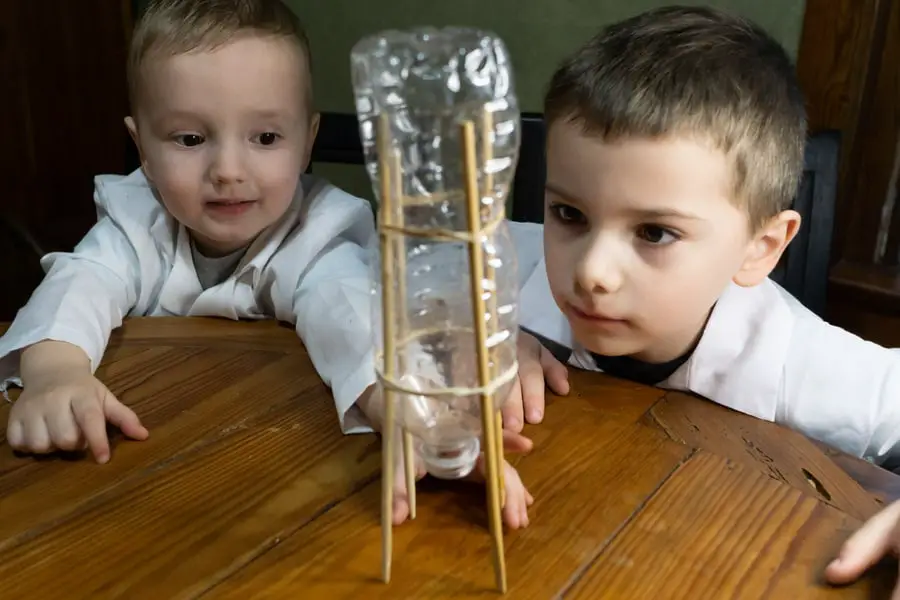
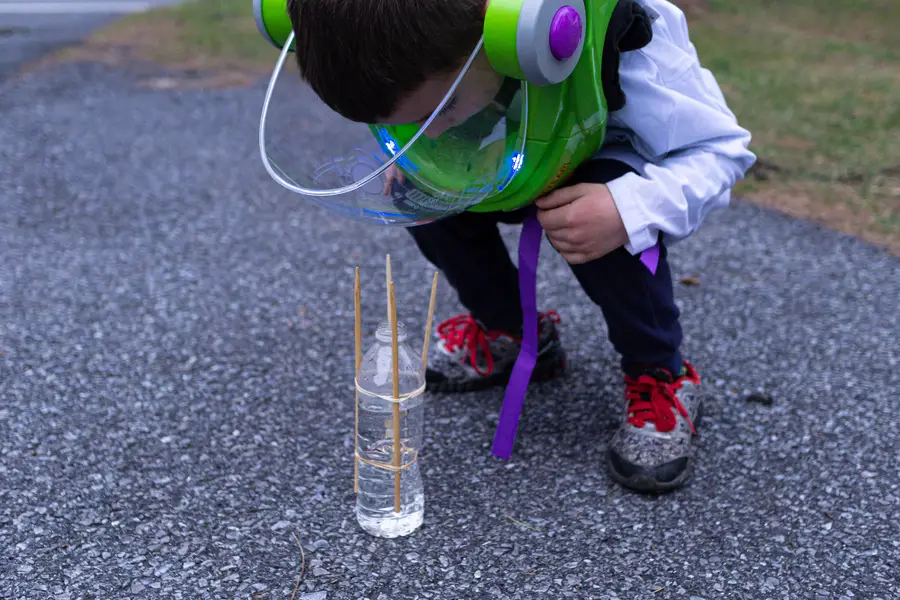
Launching a bottle rocket makes a great demonstration. Again, it’s big enough and something everyone can gather around in a circle and get a good view. It’s also simple enough that you can subdivide into smaller groups so everyone gets a chance to blast off.
What You’ll Need (per rocket):
- An empty, clean, plastic bottle
- Baking soda
- Vinegar
- One paper towel
- A cork or something similar that can seal the mouth of the bottle temporarily
- Something to hold the rocket up for launch (we used chopsticks secured by rubber bands)
How To Do The Experiment:
- Prepare an open area with something to keep the bottle upright.
- Pour between one and two cups of vinegar into the bottle.
- Cut a four-inch square from the paper towel.
- Put a tablespoon of baking soda on the paper towel and fold the paper towel to keep the baking soda in, while also being small enough to fit through the mouth of the bottle.
- Let the paper towel fall into the vinegar, put the cork in the mouth, and let the bottle stand.
- Stand back and watch the bottle go soaring.
If you’re subdividing into smaller groups, you can always encourage healthy competition in this experiment by rewarding the team that makes the best-looking and best-performing rocket. You can also allocate points based on how straight the projectile goes. This experiment is excellent for most age types, and I know few who would pass on the opportunity to do this, making it great for engagement.
Related Posts: Check this post for more activities with plastic bottles. or this one for the science behind vinegar and baking soda reactions (and of course more activities!)
Make a Balloon-Powered Car
This is a great STEM challenge to set up as a competition between groups so everyone gets a chance to participate. Each group is tasked with using the materials below to construct a car propelled by a balloon. It may sound odd, but the effect of pressurized air coming out of a small tube can be satisfying to watch if used in the right way (especially if your car is the fastest!)
What You’ll Need (per group):
- One plastic bottle
- Two wooden skewers
- Four round bottle caps
- One flexible straw
- Two normal straws
- One balloon
- One rubberband
- Tape
- One hobby knife
How To Do The Experiment:
- Cut the two regular straws to stick out on both sides of the bottle’s width.
- Tape the straws to the bottom, one straw at the end of the bottleneck and the other at the foot.
- Cut the skewers to be a little longer than the straws.
- Make holes in all the bottle caps. Ensure that the spot is in the middle of the lid for the best result.
- Push the skewer through one of the caps and let the cap rest on the non-pointy edge of the skewer.
- Push the skewer through the straw on the bottom of the bottle.
- Attach another cap to the skewer’s pointy edge after pushing it through the straw.
- Repeat the last three steps to make two more wheels.
- Cut a small hole in the top of the bottle.
- Push the flexible straw through the neck of the bottle and out of the small hole on top.
- Use the rubber band to secure the balloon to the part of the straw sticking out from the top of the bottle.
- Tape straw, so the balloon is pointing slightly backward.
- Blow up the balloon and use a finger to hold the straw closed.
- Put the car on the ground and race the balloon cars to see which is fastest.
This fun activity is an excellent way to promote some competitiveness and make a team of participants work together. By giving a reward to the team that makes the fastest car, this will be more luck than anything, you can provide extra incentive for teamwork.
Building a Tower
Building a tower is another great project for setting up some competition between groups. Using simple items like tin cans, plastic cups, or toothpicks, task each group to build the highest structure possible.
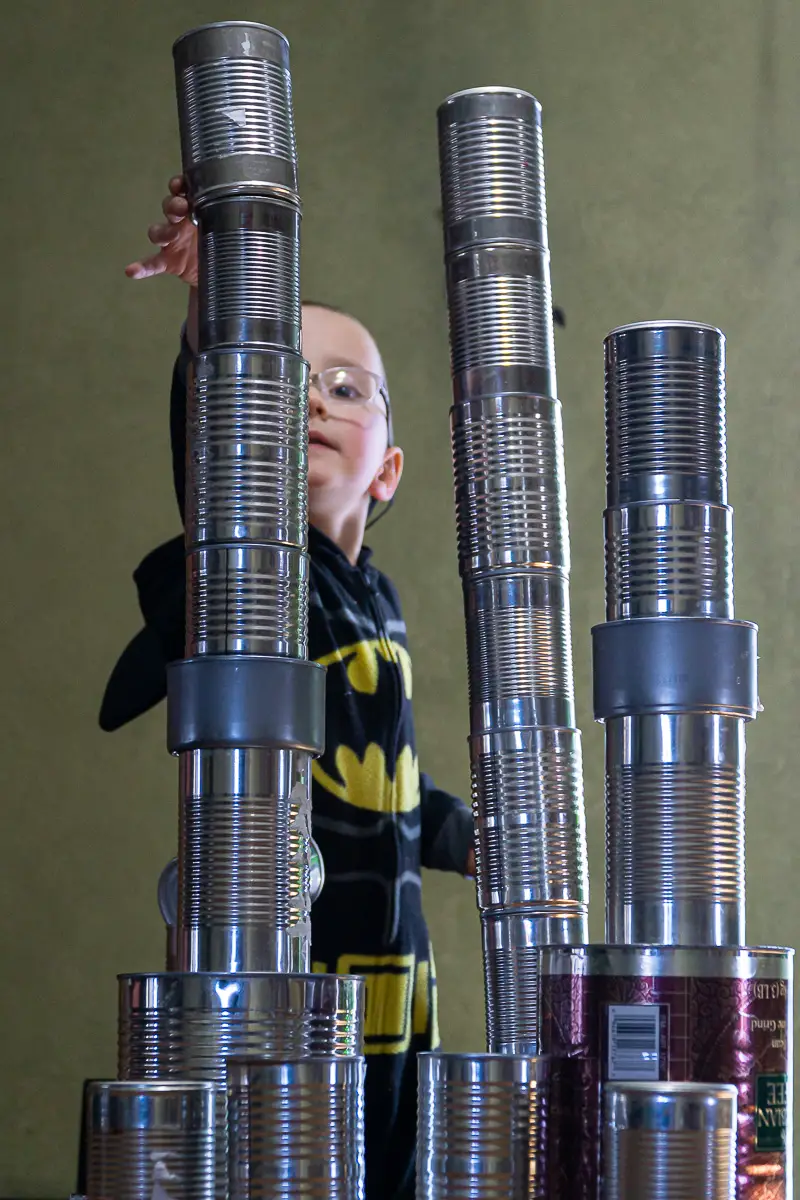
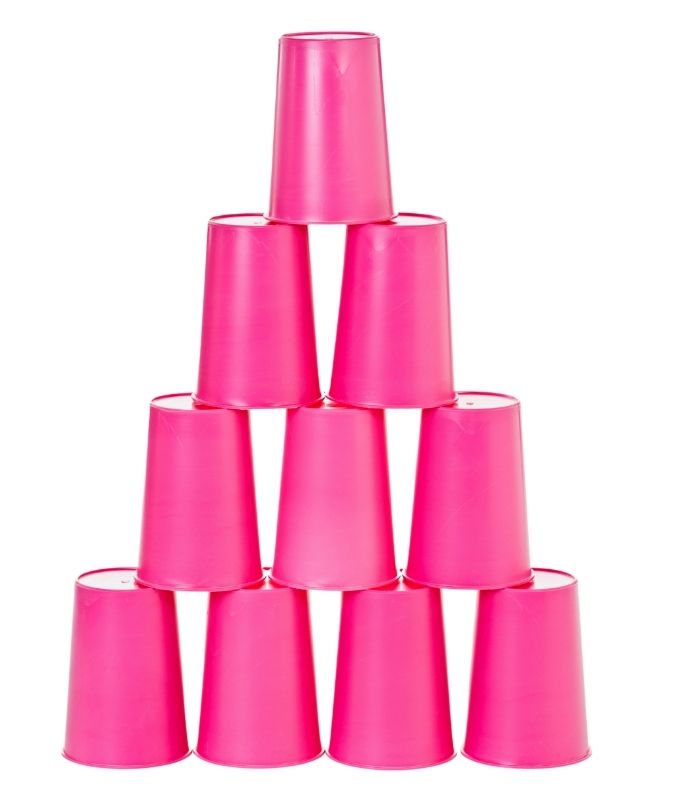
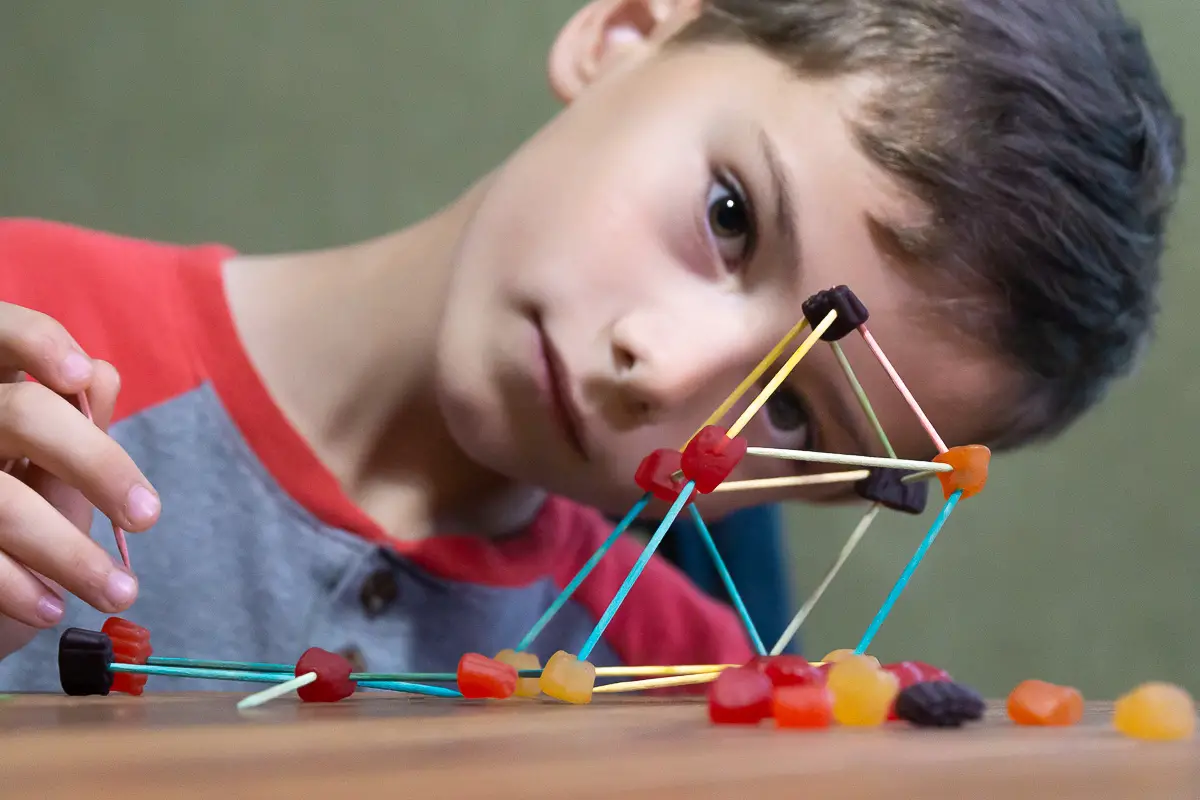
To make it more of a challenge, set a time limit. Setting a short time limit can send the kids into frenetic action, though they still need to work together and not knock over their tower by rushing or getting in each others’ way.
Craft Stick Catapult Kit
We’ve covered craft and popsicle stick catapults before, though need to mention this set designed for larger groups and classroom and camp activities. Check out this kit that includes everything you need to make 30 craft stick catapults! Here’s what they look like:
If you want to see how to do the activity, take a look on our post on activities with popsicle sticks. Also look at our catapult activities for more designs and ideas for catapult games and competitions.
Pool Noodle Marble Run
Marble runs are one of those STEM projects you can build with just about anything – and that’s part of the challenge. Here is a simple one using pool noodles as the track.
With a larger group, everyone gets to work together and construct the track.
Though the video shows a simple strait run, think of ways you can bend, cut, and join the pool noodles together to make more complex tracks.
What Is The Reason For Doing Group STEM Activities?
STEM activities for kids are meant to help provide practical experience while fostering critical thinking, creativity, and collaboration. When you combine these fun experiments with a group of people, you also allow for team building while promoting cooperation.
Introducing a bit of healthy competition can make an activity more exciting and fun. These concepts and skills will enable a child or any person to become better equipped for the world and allow them to learn in the process.
Related Post: Why Do We Do STEM Activities?
Wrap Up – STEM Activities for Large Groups
STEM activities are a fun and innovative way of learning. Whether it’s students in a classroom or a family activity at home, if you can help an entire group of people learn by doing fun activities, everybody wins. The experiments mentioned above are easy and relatively cheap to do, and certainly more fun than reading a textbook. Interactive education has been proven to be an excellent way of teaching, so be sure to try these out the next time you need a group activity.
If you need a quick class activity, check our free printables page for some printable activities you can pass out to your class (or do at home.)
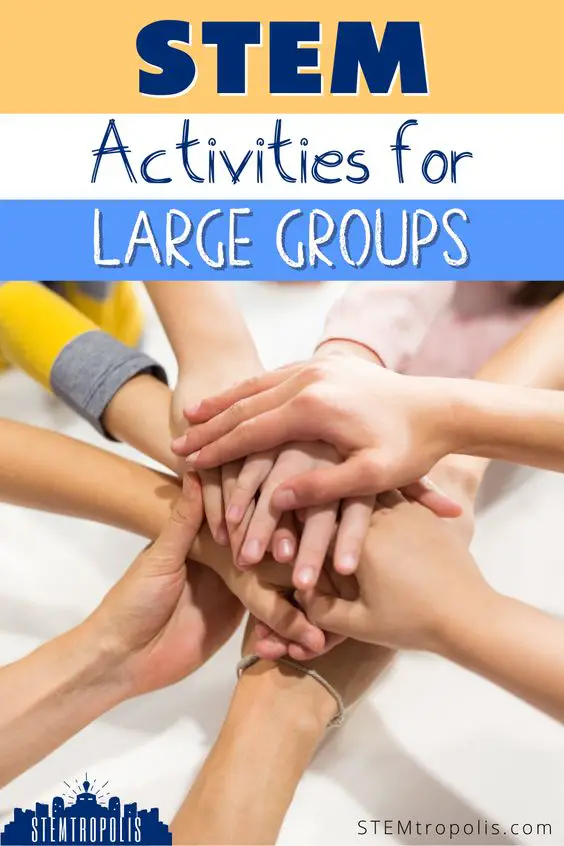
-
Unleashing Kids’ Curiosity and Creativity: The Purpose of STEM Activities
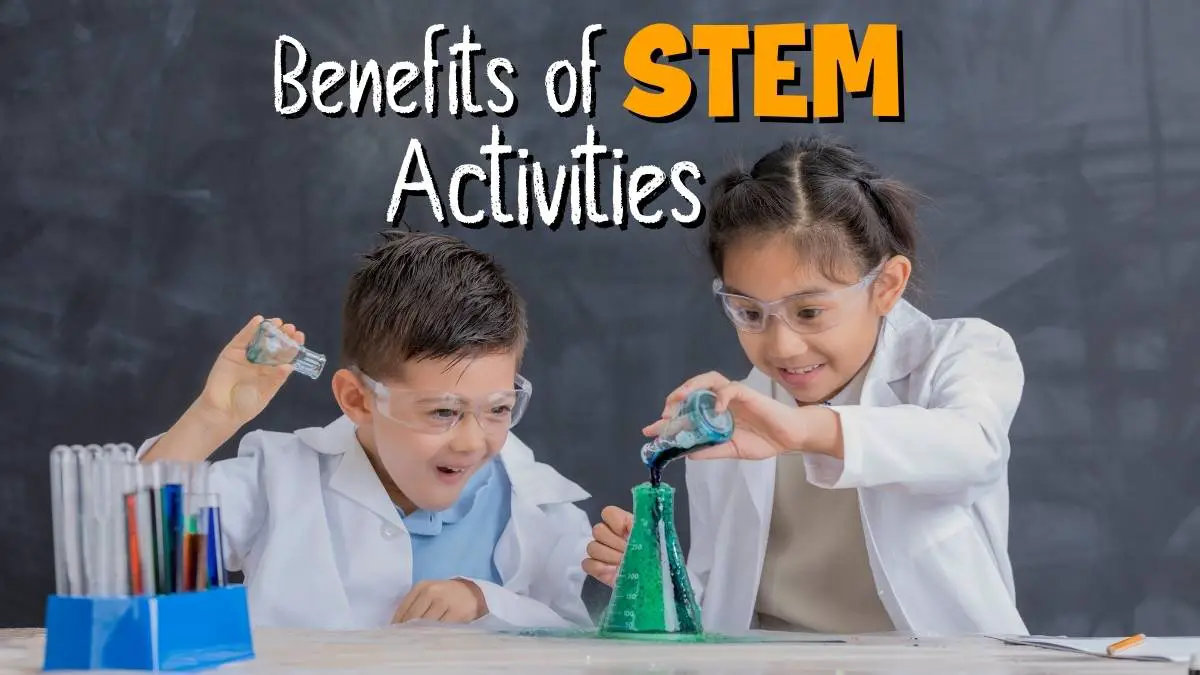
STEM (science, technology, engineering, and math) activities are an important part of a well-rounded education. Some people still wonder about the purpose of all these hands-on, experiential learning activities and
-
Tin Can STEM Projects: Fun Activities for Kids
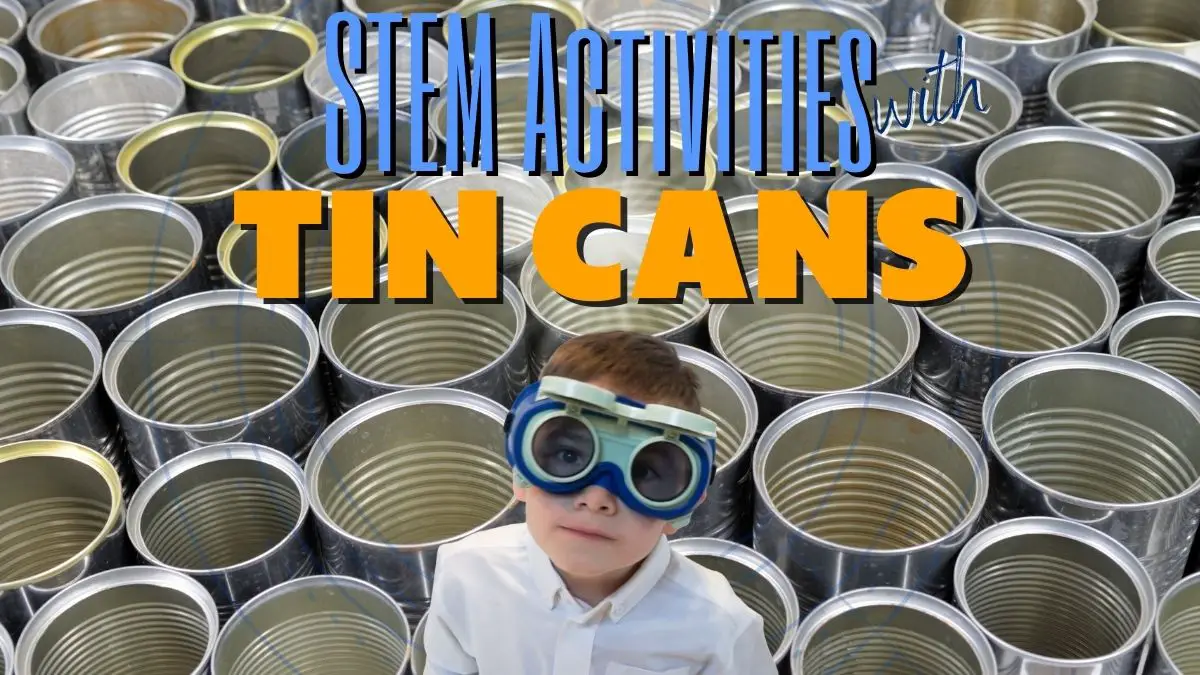
Tin cans are in almost every home on the planet. After we have opened them and used the contents, we either toss them aside or put them in for recycling.
-
STEM Projects You Can Wear: Fun Activities and Designs
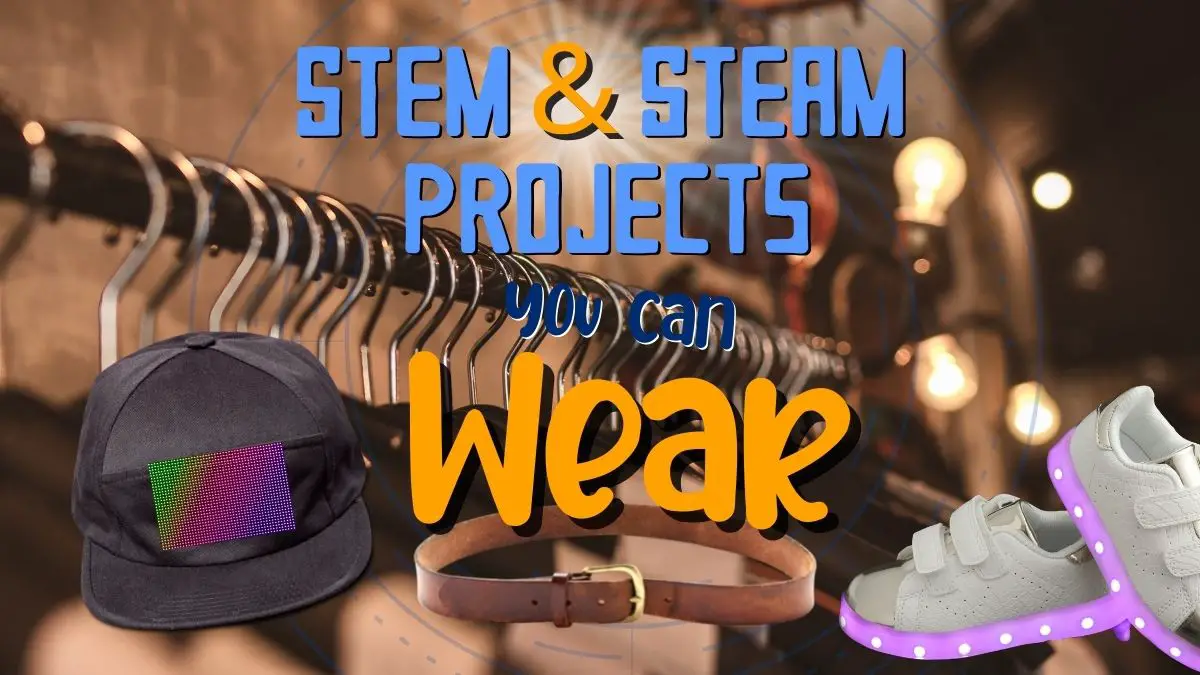
STEM projects are not commonly associated with apparel. These are unique ways to approach STEM, and the students take great pleasure in designing something they can wear. It allows the


